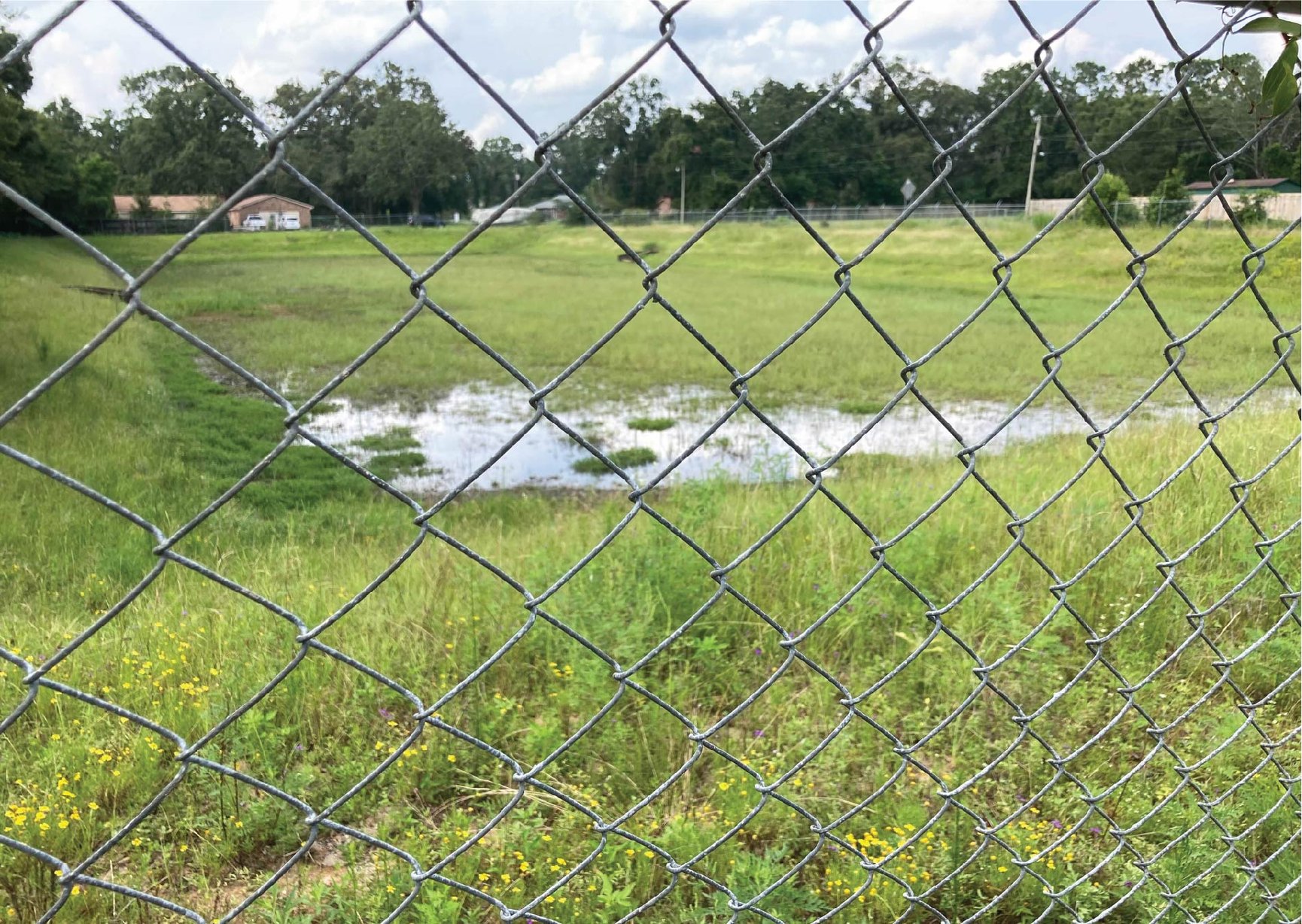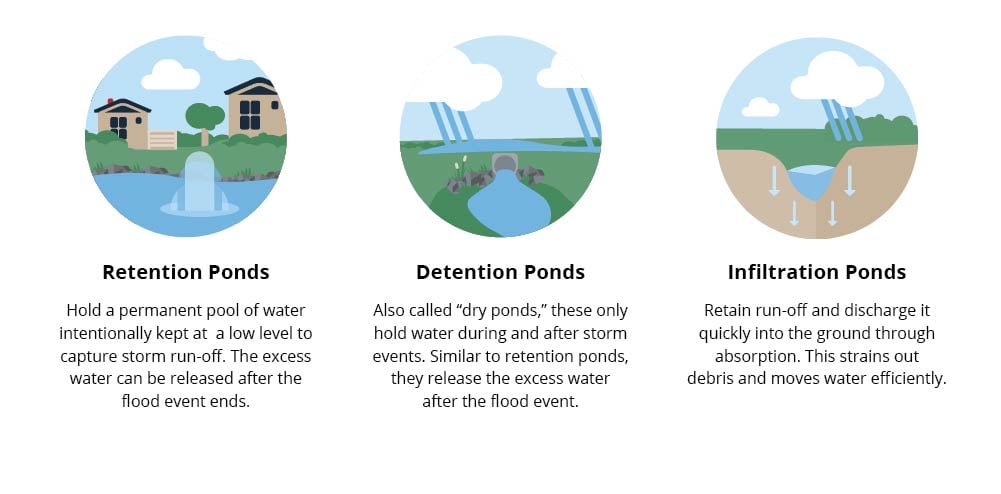How Stormwater Ponds Can Help Reduce Flooding in Your County
This popular solution helps reduce flooding in neighborhoods across the country
While often seen as a coastal issue, flooding impacts 99% of all US counties, including inland communities. Heavier, more frequent rain events combine with shrinking open space as communities grow, making it harder for water to dissipate. But the answer is not to restrict development. Smart infrastructure, like stormwater ponds, can keep communities safe and offset the increased flood risk from urbanization and more intense storms.

The Takeaway
Stormwater ponds — whether detention, retention, or infiltration — offer counties a less intrusive flood protection option at a low cost. Residents love them because they improve neighborhood aesthetics and protect properties. Counties need them because they also bring benefits on top of flood protection, like improved water quality.
- The big picture: One of the most common elements of local stormwater management ordinances is a requirement that new development does not increase flooding in surrounding areas. But with new development comes more asphalt, concrete, and roofs. Water can’t drain through these surfaces like it can through the soil, but it still needs somewhere to go. Enter one of the most common stormwater management techniques: ponds.
- How they work: Infiltration, retention, and detention ponds all help keep communities safe from flooding at a low cost and without disturbing peoples’ properties. They provide flood protection by reducing the amount of water that flows into a channel (like a stream or river) during a heavy storm event. Ponds hold the excess water, keeping the channel from overflowing. Each type of pond operates a little differently:
- Retention ponds hold a permanent pool of water intentionally kept at a low level to capture storm run-off. The excess water can be released after the flood event ends.
- Detention ponds, or “dry ponds,” only hold water during and after storm and flood events. Similar to retention ponds, they release the excess water after the events.
- Infiltration ponds retain run-off and discharge it quickly into the ground through absorption. This strains out debris and moves water efficiently.

Where they work: The retention pond in Atlanta’s Old Fourth Ward Park has greatly reduced flooding in surrounding neighborhoods. In Houston, a converted golf course uses detention ponds to hold as many as 500 million gallons of stormwater.
- Why you need them: Stormwater ponds keep your neighborhood safe and provide aesthetic and recreational benefits that other flood infrastructure does not. The ponds installed in Atlanta and Houston also serve as beautiful parks for residents and visitors.
- Why your county needs them: Infiltration, retention, and detention ponds offer great protection for the cost of construction. Ponds also collect debris and can improve water quality.
What experts say: “Many residential developers will sell lots around a stormwater pond as ‘waterfront property’ and a well-maintained one really can be a nice amenity,” Carrie Stevenson, Escambia County Coastal Sustainability Agent, told the University of Florida. “However, at their core, these are stormwater treatment mechanisms.”
Take action: Stormwater ponds can protect a neighborhood from flooding while also giving residents a new destination and even improving a town’s water quality. But county officials need to hear from their constituents before acting on projects like installing ponds. Tell your local elected officials that not only can ponds protect property, they can also improve water quality and quality of life for residents, at a relatively low cost.
